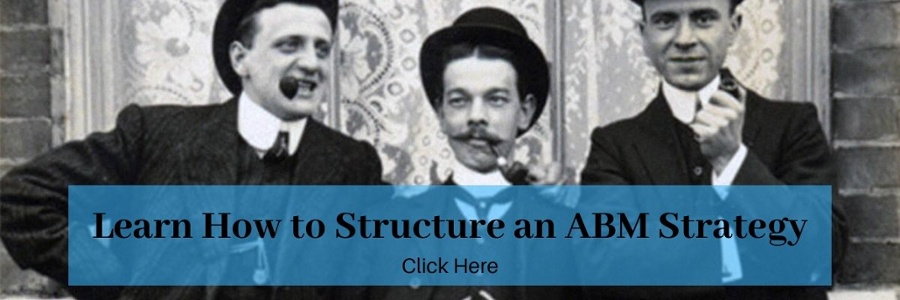 This blog is the second in a series explaining the strategy of account-based marketing and how business who are a fit can benefit from this approach. Find the first installment here .
This blog is the second in a series explaining the strategy of account-based marketing and how business who are a fit can benefit from this approach. Find the first installment here .
In the previous post on Account-based marketing (ABM) we outlined several reasons as to why this approach is a good fit for small manufacturers, but what exactly is ABM and what are the benefits does this strategy yield? ABM is a highly focused strategy that personalizes your marketing efforts around individual prospects and specific companies as opposed to marketing to an industry segment as a whole.
For example, rather than buying a trade publication ad meant to create awareness for your forged metal parts company, you instead, create a marketing handout outlining how you can address the pain points felt by a procurement professional at General Motors and then get that handout in front of that procurement professional via LinkedIn. We’ll get into the how’s in a future post, but first, let’s discuss some of ABM’s proven advantages. The benefits of adopting ABM are aplenty; however, there are several that stand out as the most impactful.
Personalized Customer Experiences.
One thing we hear all the time from owners and heads of sale at manufacturing companies is that, “This is a relationship business.” This is true. People buy from people—people they like and trust. Yet in the same meeting, these owners and sales managers confess that it’s becoming increasingly difficult to get face-to-face meetings with prospective customers. There are several factors behind this, but one that comes up consistently is the growing number of digitally savvy millennials in procurement, project management, and engineering with decision-making responsibilities, and cold-calling millennials for a meeting will likely hurt you more than help.
The go-to option for millennials is the Internet where industrial marketers could offer helpful content in an attempt to gain trust that would eventually lead to a sales opportunity. Per usual, though, marketers ruin everything. (Yes, we said that.) Now, we’re living in a world of over-stimulation, and that includes gobs of worthless, over-generalized content, meaningless data, and pushy sales pitches flooding social media feeds and email inboxes. With ABM, however, to the goal is to craft more personalized messaging that speaks to individuals at specific accounts. In doing this, ABM provides real value while showing that you understand someone’s needs, creating a personalized customer experience. In essence, it’s using digital to start the relationship.
Clearer views of Return on Investment
Marketing efforts that are highly personalized and precise lead to a simpler path of attribution to a closed deal. Success with ABM is measurable since closing a sale can be directly connected to the account targeted by the campaign. ABM as a strategy has existed for several decades prior to now, however, what’s different today is the capabilities afforded by software tools to target specific customers, gauge their interest, make contact when appropriate, and maintain visibility on the relationship from RFQ to closing.
Seeing a tangible ROI from your ABM investment certainly makes it worth it, and what’s more, as you continue marketing to that customer for an increased book of business and longer lifetime value. This is not to mention the studies that have shown the added savings provided by ABM due to a lower overall cost per acquisition (CPA).
More Efficient Sales Cycles
The less spaghetti that marketing has to throw at the wall, the more efficient a campaign can be. With a focus on accounts that are the most likely to drive revenue, resources, money, and time are all optimized in the process. Prospects that aren’t a precise match become a lower priority, freeing up all the above to be allocated towards targeted accounts that are more likely to convert. A more efficient sales cycle isn’t the only benefit here either. A 2017 industry study found that companies who implemented an ABM strategy indicated seeing a shorter sales cycle, higher closing rates, and larger deal amounts. What’s not to like about that?
Sales and Marketing Alignment
The misalignment of expectations between sales and marketing has been a longstanding point of contention across all industries. ABM, however, finally brings the two entities together. In fact, the integration of sales and marketing teams is essential to the foundation of account-based marketing. With a synchronized strategy, sales teams are clear on exactly what accounts to focus on and can provide direct feedback to marketers who can then employ messaging and tactics that directly support sales in a more precise way.
Communication is, of course, key, but when these two parties have a clear understanding of their specific roles are united by a common effort aimed at a targeted account, alignment is achieved. And with alignment comes success and even better results. A true win-win for everyone.
These are but a few of the benefits companies have reported as a result of implementing ABM strategies, tactics, and tools. The question you may be asking now is what does an ABM strategy look like. In the next blog post of this series, we will explore exactly how small manufacturers can adopt this strategy at scale to increase their business.
* * *





